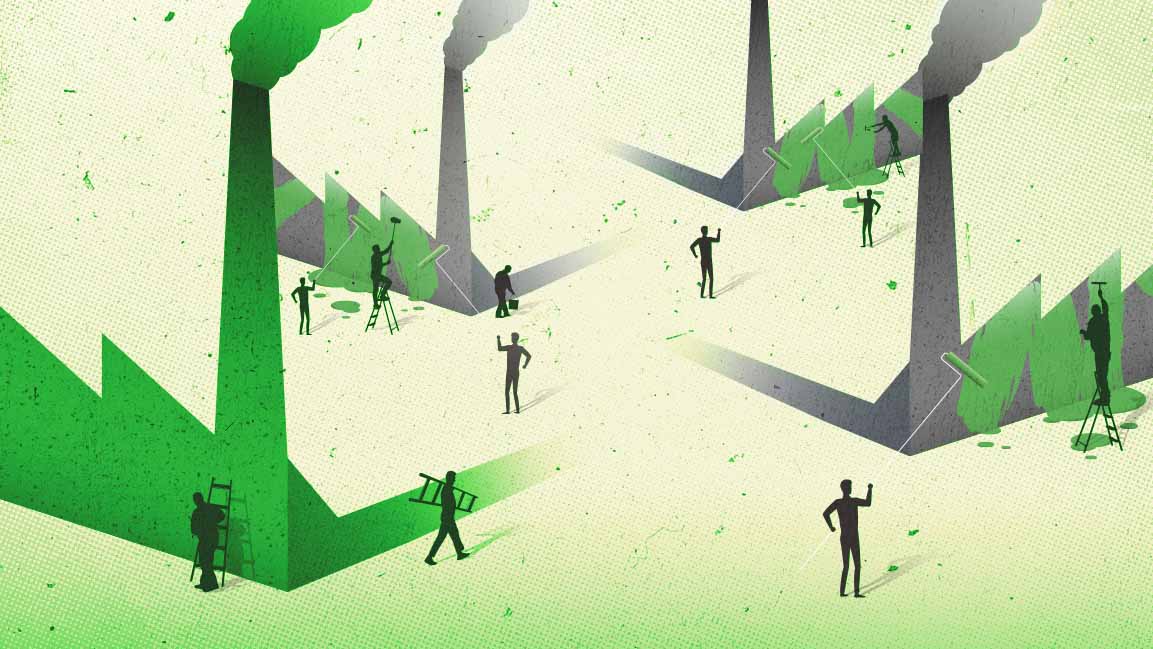- | 8:00 am
5 changes that will make our planet-saving resolutions real
What has to change in 2023 to get us closer to achieving our most important, ambitious resolutions for our planet’s climate and ecosystems.

I have a love/hate relationship with New Year’s resolutions. I love the reflection that a new year invites, and the optimism regarding positive change that it creates. Making a resolution that clarifies a big aspirational goal can feel like progress itself.
But real change is hard: it requires discipline, time, and a willingness to honestly assess your own progress. The best intentions mean nothing without that follow-through.
The same holds true for the resolutions we make to protect and restore our planet’s climate and ecosystems. So far this decade as a global community we’ve made some promising and hopeful resolutions. In 2020, we spoke of leading a Decade of Restoration. Then in 2021, we made clear that we would stop deforestation and hold climate change to 1.5 degrees C. Then last year, we continued our streak of boldness at COP 15, announcing that through 30×30, we’d conserve 30% of the earth’s surface for wild ecosystems by 2030.
Awesome, right?
But last decade was the decade for biodiversity. And we resolved to halve deforestation in 2014, too. Even a cursory look at the data shows that we’re far behind on those past commitments. As we take up new resolutions for the years to come, it’s clear that without a real plan for making steady progress, those new commitments could end up as unsuccessful as my resolution last year to exercise more.
What would have to change in 2023 to get us closer to achieving our most important, ambitious resolutions for our planet’s climate and ecosystems? Here are five big shifts I’m hoping to see.
INDIGENOUS COMMUNITIES GET PAYMENT ON THEIR TERMS FOR THEIR CONTRIBUTIONS
A depressing reality we’ve seen throughout the history of climate action is that while indigenous communities worldwide frequently shoulder the pain of climate change and ecosystem degradation, they are either left out entirely or receive far less than their due when it comes to compensation for their contributions to protecting and restoring nature.
After persistent efforts spanning decades, these communities have fought for and secured a bigger voice in the international meetings that decide the way forward for the planet. With that position, they have demanded financing from the governments of the world to support their critical efforts to help turn the tide for the planet.
Despite the important role of governments in creating and backing the major resolutions, the day-to-day decisions and agency for protecting and restoring the most vital ecosystems on earth often rests with indigenous communities that will need payments and resources to change what happens on the ground. They have been clear to the international climate community what they need: This year, I hope that we’ll all get better at listening and paying for the change we need.
REMOTE SENSING IS MORE BROADLY APPLIED TO INCREASE THE QUALITY AND SCALE OF NATURE-BASED CLIMATE SOLUTIONS
In addition to listening better, we’re also seeing far more clearly thanks to advances in remote sensor technology and analysis.
But if we’re going to scale efforts to reduce deforestation, we need a basis for measurement and payment that matches that ambition. This necessitates a rapid shift from remote sensing as a fun novelty to a means to check and settle contracts.
In 2023 we’ll get our first real look at what “financial grade” remote sensing measurements look like at scale. These have the potential to unlock a scale of impact that we haven’t been able to reach before.
“NATURE POSITIVE” CARBON CREDITS EMERGE AS A DIFFERENTIATED OFFERING
Did you catch this article? The thing about natural systems is that you can’t change one thing (like carbon storage) without impacting lots of other things (think: species habitat, water yield, fire risk). Optimizing for carbon storage might look like planting a monoculture for miles, but wouldn’t do anything positive for the complex ecological web native to that land.
Nature is not monolithic and actions will have mixed consequences that we’ll increasingly recognize as tradeoffs.
Overcoming climate change is good for everyone, and restoring nature at the same time is going to require a nuanced approach. We’ve got the technology to get started and now the biodiversity crediting framework to wire it onto—but these first few steps may be shaky. I’m hoping to see early efforts gain attention and traction from buyers in the market that want to think beyond “just” carbon.
COMPREHENSIVE RISK ASSESSMENT OF CARBON CREDITS
Do you remember last year’s announcement from the SEC mentioning they may require climate disclosures in 10-Ks? Climate-minded CFOs everywhere do.
If the SEC began scrutinizing the climate claims companies made by requiring disclosure of the risk of the underlying carbon credits not panning out, companies would take a closer look at their carbon credits to ensure that they were aware of and compensating appropriately for that risk.
This, in turn, would be great for the planet, as it would put a dent in greenwashing (whether intentional or inadvertent) by forcing market participants to ensure that their carbon credits represent real benefits for the climate.
NATURAL CAPITAL GETS TREATED MORE LIKE A REGULAR FINANCIAL ASSET
One of the more exciting announcements I heard at COP27 was the Global Carbon Trust, which aims to be the central infrastructure for carbon market transactions.
For all of our planet-saving efforts to pan out, we’re going to need speedy development of economic infrastructure to handle transactions at massive scale supporting the conservation of natural capital.
Commodities markets have helped facilitate appropriate valuation of natural assets for hundreds of years. Though natural capital like biodiversity and carbon storage are different from copper and corn, they also benefit from similar infrastructure to help ensure the market is appropriately valuing them. This is what will make it safe and boring to scale nature-based climate solutions. For the sake of progress toward our ambitious goals for our planet’s climate and ecosystems: safe and boring are good.
If this time next year we can look back at 2023 and see significant progress on each of these fronts, I’ll have a lot more confidence that we’re on track to reach the ambitious resolutions we’ve collectively set for protecting and restoring nature.








































